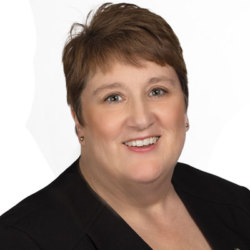Studies suggest hope for rural Nebraska requires cutting red tape
A series of stories and studies released recently suggest a grim future ahead for rural Nebraska if the state, counties, and cities don’t make it easier for young people to return to their hometowns.
A recent analysis of census data shows that 78% of the counties in Nebraska (or 72 of the 93 counties) lost population in the last decade. The few counties that grew, with a few exceptions, tended to be those counties that are already more highly populated in eastern Nebraska–Lancaster, Douglas, Sarpy, Saunders, and Washington County, with those showing gains, or fewer losses, tending to surround those counties.
For rural Nebraskans, that information should raise red flags of concern, because as the population decreases, it will become more and more difficult to maintain services in small communities that could continue to support new growth down the line.
The census results come at the very time that a full report of the Nebraska Youth Survey from last year crossed my desk. That survey of high school students in eight rural communities in the state suggests that many of the young people in our state would like to return to live in a hometown like their own for a myriad of reasons–including their belief that towns like theirs are good places to raise families, or because of family ties to the community.
When asked why they would not choose to live in a place like their hometown, over half of them suggested, in order, that: 1) career opportunities were elsewhere; 2) there was a lack of entertainment in their community, or; 3) they could make more money elsewhere.
Logically, it would seem that small towns and counties need to find ways to change the perception that there is a lack of opportunity for young people who might decide to return to their hometowns, and the regulatory environment in Nebraska is a part of that. We’ve told the story of Mike Beyer, a 20-something who returned home to Bridgeport with dreams of working as an electrician after eight years as a U.S. Navy construction electrician, only to be told that his experience would not allow him to test for a license without even more supervised experience. His hope was to go to work for a local electrician, and eventually start his own company as an electrical contractor.
A recent policy analysis from the Cato Institute suggests that looking at our regulatory environment–both in the area of occupational licensing and in entrepreneurial start-ups–could be the answer to some of our de-population questions. Clearly, young Nebraskans would like to be able to live and work in a community like that which they’ve grown up in. But without job opportunities (or easier paths to entrepreneurship in their own hometowns), they are likely to continue to go where the jobs are–urban areas and out of state.
The Cato analysis by Chris Edwards reviews an assortment of literature and concludes, among other things, that:
- State governments should repeal certificate of need laws because they block new businesses and investments for no good reason. These laws tend to reduce supply, raise prices, and block innovations that new businesses would bring to industries.
- State governments should review all occupational licensing rules and regulations and repeal those that other states do not require or that fail cost-benefit tests. States should accept licenses issued by other states, explore whether licenses can be replaced by private certification, and reduce the costs and time requirements for needed licenses.
Removing barriers to opportunity may be the single best thing that the state can do if it seeks to stop the loss of population in rural areas. From making occupational licensing easier (LB263 would have eliminated Mike Beyer’s problem as an electrician), to reducing the number of hoops that entrepreneurs have to jump through in order to be allowed to operate their start-ups, our young people see the value in living in smaller communities; they just need to be able to see a path to achieving their dreams in those communities.
